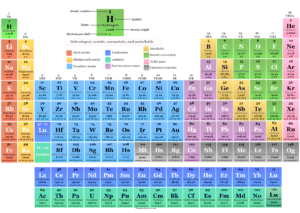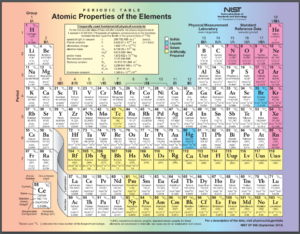
The periodic table stands as one of the cornerstones of modern chemistry, organizing elements into rows and columns based on their atomic structure. Central to this organization is the concept of atomic numbers, which not only sequence the elements but also define their fundamental properties.
Understanding Atomic Numbers
Atomic numbers represent the number of protons found in an element’s nucleus. This unique identifier distinguishes one element from another; for instance, hydrogen, with an atomic number of 1, has one proton, while helium, with an atomic number of 2, has two. This ordering forms the basis of the periodic table’s layout, where elements are arranged in increasing order of atomic numbers from left to right and top to bottom.
Elemental Properties Defined
- Chemical Behavior: Atomic numbers dictate an element’s chemical properties. Elements with similar atomic numbers exhibit analogous chemical behaviors due to shared electron configurations, influencing how they react with other substances.
- Physical Characteristics: Properties like atomic radius, electronegativity, and ionization energy correlate with atomic numbers. Trends across rows (periods) and columns (groups) of the periodic table illustrate these relationships, offering insights into elements’ physical states and behaviors.
Practical Applications and Implications
- Material Science: Engineers and material scientists leverage periodic table trends to select elements for specific applications. For example, elements with low atomic numbers like carbon and silicon are essential in semiconductor technology due to their unique electrical properties.
- Biological Relevance: Understanding atomic numbers aids in comprehending biological processes. Essential elements like oxygen (atomic number 8) and calcium (atomic number 20) play critical roles in biochemical reactions and human physiology.
Future Directions in Periodic Table Research
Advancements in spectroscopy and computational chemistry continually refine our understanding of atomic structures and properties. Future studies may unveil new elements or deepen our understanding of known ones, expanding the periodic table’s utility and relevance in scientific disciplines.
Conclusion
The periodic table’s organization based on atomic numbers serves as a foundational framework for understanding elemental properties across disciplines. From chemistry labs to advanced materials research, the principles outlined by atomic numbers continue to shape scientific inquiry and technological innovation, highlighting the enduring significance of this iconic scientific tool.
In conclusion, exploring the modern periodic table through the lens of atomic numbers illuminates not only the diversity of elements but also the interconnectedness of their properties. As research progresses, so too does our appreciation for the role atomic numbers play in defining the natural world.



